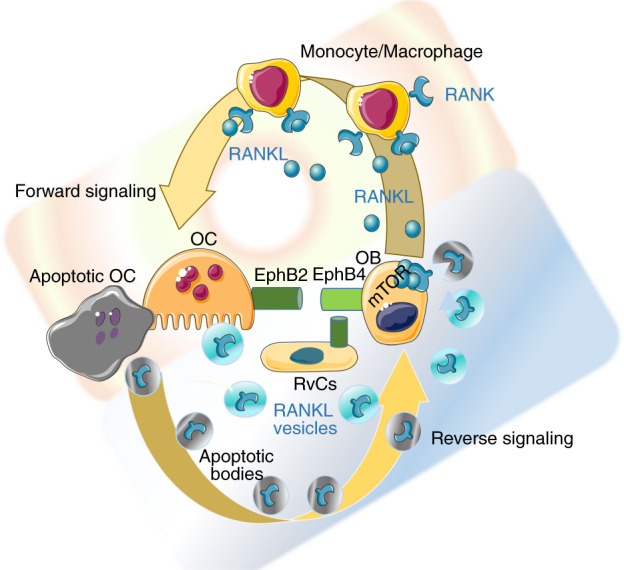Fig. 5.

Anabolic osteoclasts. Osteoblasts stimulate osteoclastogenesis by producing RANKL as a forward signal. However, osteoclasts can act as anabolic cells by generating positive reverse signaling in osteoblasts. Both resorbing and apoptotic osteoclasts can release extracellular vesicles (EVs) that contain RANK. Once discharged from EVs, RANK binds RANKL clusters on the osteoblast membrane and activates osteogenesis via the mTOR pathway. In addition, EphrinB2 signaling from osteoclasts to EphB4 on osteoblasts/bone lining cells (BLCs)/reversal cells favors osteogenic differentiation
